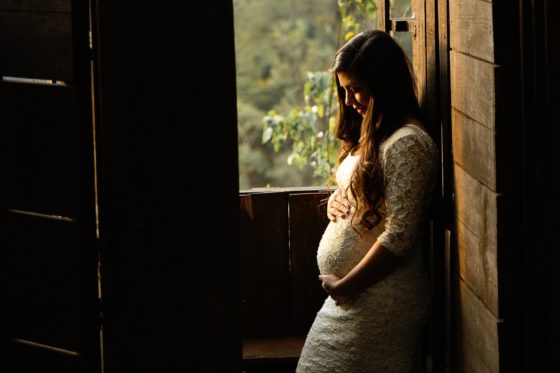More Pregnant Women are Dying in Rural America. Why?

Why is pregnancy and childbirth care getting worse in rural America? What sort of complications are we seeing, and what can we do to get help?
Contents
Maternal Death Rate: A Look at the Statistics
The Wall Street Journal took a deep dive into statistics on the maternal death rate made available by the Centers for Disease Control and Prevention.
Per 100,000 women age 15 to 44, adjusted for shifts in the population’s age structure in 2000, the following were maternal death rates in 2015:
- 2.02 deaths per 100,000 in small towns and rural areas
- 1.44 deaths per 100,000 in small and medium metro areas (anchored by a city of at least 50,000)
- 1.23 deaths per 100,000 in large metro areas (core counties of metro areas with more than 1 million people)
- 1.23 deaths per 100,000 in suburban areas (the other counties of the large metro areas)
Compare that to 2000, when the rates overall were much lower, with all areas seeing fewer than 1 death per 100,000 women because of pregnancy or post-natal complications. Most hovered around 0.5 per 100,000, though large metro areas were in the lead 15 years ago.
Why? What’s changed?
Our Health is Worse
For one, we aren’t as healthy as we were years ago. Even though there has been more awareness around unhealthy eating habits, thanks to some popular food documentaries, our nation still faces an obesity epidemic. Our blood pressure is higher and we’re heavier as a society.
Here are some complications pregnant women who are obese can possibly expect over their healthy-weight counterparts:
- Higher risk of a miscarriage and recurrent miscarriage
- Congenital anomalies, such as spina bifida and congenital heart disease
- Preeclampsia
- Gestational diabetes
- Fetal macrosomia, or a very overweight baby, which can cause brachial plexus injuries
- Shoulder dystocia, which is when baby’s shoulder gets stuck during delivery, possibly leading to nerve damage
Additionally, obese women are more likely to have a C-section than pregnant women of a healthy weight (47.7% versus 20.7%). They also are more likely to die during an operation from complications such as excessive blood loss, postpartum endometritis, wound infection, and anesthesia problems.
Sound scary? It is. For reference, woman should aim to gain 25 to 35 pounds during pregnancy if they were at a normal weight before pregnancy, while overweight women should gain 15-25 pounds and obese women just 15 pounds.
See also: Can Obesity Before Pregnancy Cause Cerebral Palsy?
There’s Fewer Healthcare Options
In just 15 short years, a lot can change. The Wall Street Journal report points out fewer resources being available, such as high-risk pregnancy specialists in rural areas, while many hospitals in small towns also have eliminated labor and delivery services. Women must travel farther to give birth when they live in a rural area, and as we know, every minute can count during a difficult labor.
Labor and delivery services also have been eliminated in urban areas, but at a much smaller rate. Big cities saw about a 5% decline in those services between 2000 and 2014, while small towns saw a 15% drop.
The reasons that labor and delivery services have ceased in all areas is because of the general decline in the birth rate (fewer patients to serve), medical facilities closing, and hospitals finding difficulty getting malpractice insurance.
Called “maternity deserts,” some rural areas also do not offer prenatal care because of a lack of OB/GYNs, which can make catching a pregnancy complication before birth much more tricky. Many women suffer from preeclampsia during pregnancy, a condition that affects blood pressure and can be dangerous for both mother and baby. Complications at birth, like baby being in breech position, may be more dire in rural areas if a specialty doctor isn’t on call and an emergency C-section is performed by undertrained staff.
See also: How Common are Birth Injuries and Birth Defects?
So, what can I do if I’m pregnant?
If you live in a rural area, you can’t be expected to just up and move because of some statistics, however frightening they may be. But you will want to find a way to obtain good prenatal care.
You want to make sure you eat the right foods and avoid medicines you shouldn’t take while pregnant. Become as educated as you possibly can about your pregnancy, and make sure your specialist and medical team is experienced, too.
You need to know that going into your pregnancy, and up to birth, there can be complications. Many women experience some issues during pregnancy but end up delivering a perfectly healthy child. It is normal to be a little worried, but try not to stress too much (as they say about a lot of things now, it’s bad for baby!).
If you find that your doctor is not up to par, either during or after delivery, you can contact us. Doctors are human, and they make mistakes. But sometimes those mistakes can lead to a birth injury — for mother or baby. Reach out to Safe Birth Project and let us know how we can help.








Hey, I am actually writing my thesis surrounding some of this info! I was curious where you found the stats about maternal mortality in rural areas vs urban as I can’t find it on the CDC. Thanks!
Hi Laura, it was part of a data analysis by the Wall Street Journal that they published, though I think that article is now behind a paywall. You may need to request the information directly from the CDC. Good luck on your thesis! Sounds interesting. 🙂